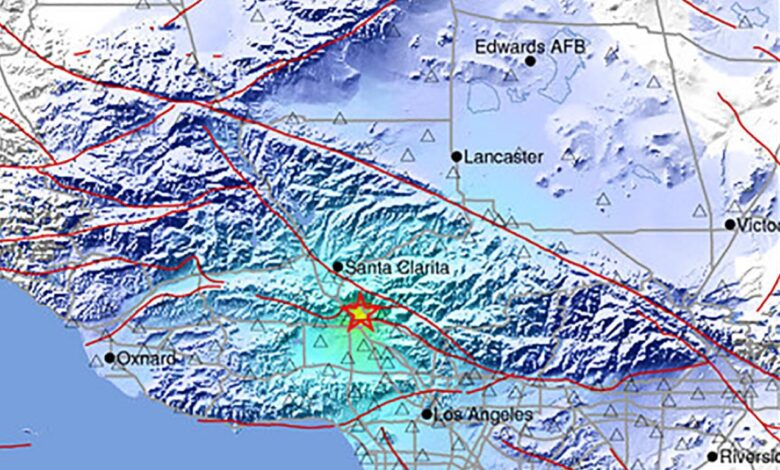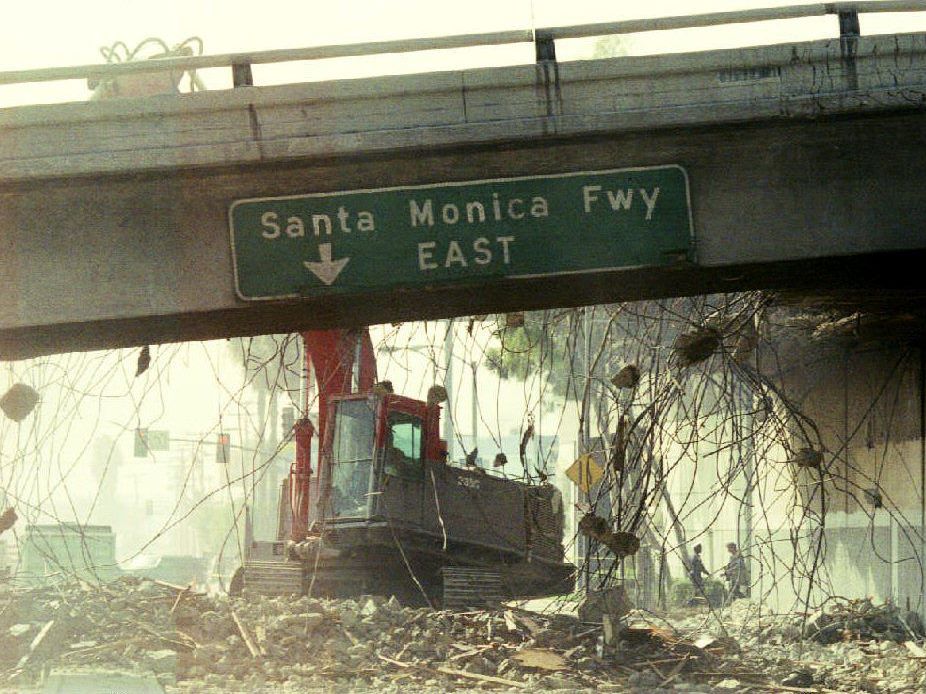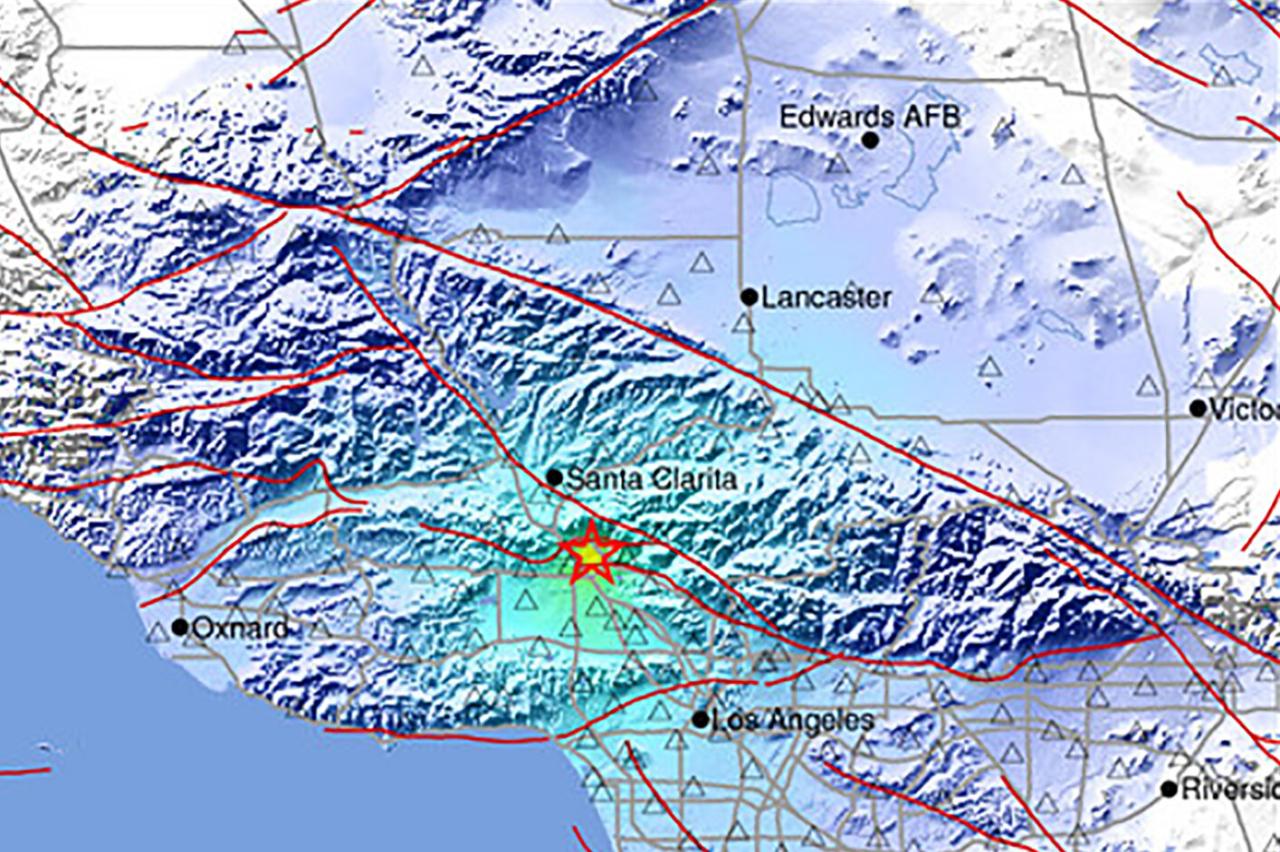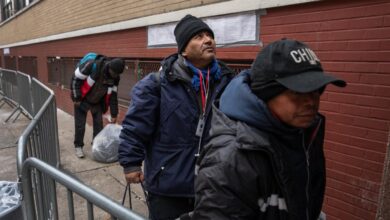
Earthquake NYC Los Angeles A Comparative Study
Earthquake NYC Los Angeles: A deep dive into earthquake preparedness, infrastructure vulnerability, and response strategies for two contrasting cities. This exploration compares and contrasts the unique challenges and opportunities facing each city in the event of a major seismic event.
From building codes and mitigation strategies to the impact on infrastructure and the roles of different organizations, we’ll uncover the critical aspects of earthquake preparedness in both New York City and Los Angeles. We’ll examine the potential consequences, from the economic fallout to the disruptions in everyday life. Ultimately, the goal is to understand how preparedness can be improved and vulnerabilities addressed to safeguard these bustling urban centers.
Earthquake Preparedness in NYC and Los Angeles
Earthquake preparedness is crucial for both New York City (NYC) and Los Angeles (LA), though their approaches differ significantly due to varying seismic activity levels and architectural histories. NYC, situated on relatively stable bedrock, faces a different risk profile than LA, which sits on a complex network of fault lines. This necessitates distinct preparedness strategies and resources.Understanding the nuances of earthquake preparedness in these two major American cities is vital for effective mitigation and response.
Both cities have experienced tremors throughout their histories, though the magnitudes and frequencies differ greatly. This difference necessitates distinct approaches to earthquake-resistant building codes, emergency response plans, and public awareness campaigns.
Earthquake Preparedness Plans and Resources
NYC’s preparedness plans are primarily focused on mitigating the immediate impact of shaking, and ensuring the safety of critical infrastructure and emergency services. LA, conversely, emphasizes long-term mitigation through building codes and community education. The resources available in both cities, while substantial, reflect their respective earthquake risks. NYC focuses on drills and preparedness training, while LA invests heavily in seismic retrofitting programs.
Building Codes and Regulations for Earthquake Resistance
Building codes in LA are significantly stricter regarding earthquake resistance compared to NYC. This is due to LA’s higher seismic activity and the potential for catastrophic damage. LA’s building codes mandate specific construction techniques, materials, and design principles to ensure buildings can withstand strong ground motion. NYC’s codes, while important, are less stringent due to the lower predicted seismic activity.
This difference in regulatory standards underscores the varying degrees of risk faced by each city.
Thinking about earthquakes in NYC and LA lately? It’s a scary thought, especially given the potential impact on public health. While we worry about the aftershocks and infrastructure damage, it’s also important to remember the crucial role of medication in managing health conditions like asthma. The recent FDA warning about the asthma drug Singulair ( fda singulair asthma drug warning ) highlights the constant need for vigilance in healthcare.
Hopefully, such proactive measures will help us better prepare for any potential health emergencies, even in the face of a catastrophic earthquake.
History of Major Earthquakes and Lessons Learned
NYC has experienced tremors, but none of the magnitude that LA has experienced. The history of major earthquakes in LA, like the 1994 Northridge earthquake, serves as a stark reminder of the devastation potential. Lessons learned from these events include the need for robust building codes, early warning systems, and comprehensive emergency preparedness plans. NYC has learned from historical tremors to prioritize infrastructure resilience and community preparedness drills.
Comparison of Seismic Activity Levels
| City | Seismic Activity Level | Recent Earthquakes | Mitigation Strategies |
|---|---|---|---|
| New York City | Low to moderate | Minor tremors, no major events in recent history | Focus on infrastructure reinforcement, emergency drills, and public awareness campaigns. |
| Los Angeles | High | Northridge (1994), numerous smaller events | Stricter building codes, seismic retrofitting programs, and comprehensive emergency response plans. |
This table highlights the stark difference in seismic activity between the two cities. The contrasting seismic activity levels directly influence the strategies for mitigation and preparedness. The differences are apparent in the approaches to building regulations, the need for different community engagement strategies, and the emphasis on different types of preparedness exercises.
Roles of Organizations in Earthquake Preparedness
Government agencies, such as the Federal Emergency Management Agency (FEMA) and local emergency management agencies, play a critical role in earthquake preparedness. Their responsibilities include developing plans, coordinating resources, and providing emergency services. Community groups also play a vital role by educating residents, organizing drills, and supporting those affected. The collaboration between these organizations is crucial for effective preparedness and response.
FEMA’s involvement is crucial in both cities, providing funding and expertise in disaster response.
Earthquake Impacts on Infrastructure

Earthquakes pose a significant threat to urban areas, particularly those with dense populations and aging infrastructure. This vulnerability is magnified when considering the interconnectedness of modern society, where disruptions to critical services can cascade into widespread economic and social problems. Understanding the potential impacts of earthquakes on infrastructure is crucial for developing effective mitigation strategies.The infrastructure of major cities like New York City and Los Angeles is complex and interwoven.
Essential services, from transportation and communication to water and power, are reliant on a delicate balance of interconnected systems. A powerful earthquake can severely disrupt this equilibrium, leading to catastrophic consequences.
Transportation Impacts, Earthquake nyc los angeles
The extensive transportation networks in both cities, including subway systems, highways, and bridges, are vulnerable to earthquake damage. Ground shaking can cause structural failures, leading to collapses and damage. Disruptions to transportation networks can severely limit access to essential services and hinder emergency response efforts. For example, the 1994 Northridge earthquake in Los Angeles caused extensive damage to freeways and bridges, leading to significant traffic delays and disruptions for weeks.
Communication System Disruptions
Earthquake-induced damage to communication infrastructure, including cell towers, fiber optic cables, and telephone lines, can result in widespread communication failures. This disruption can hinder emergency communication, impede rescue operations, and severely impact business operations. The 2011 Tohoku earthquake in Japan demonstrated the devastating impact of communication outages on the ability of emergency services to respond effectively.
Utility System Failures
Power outages, water supply disruptions, and gas leaks are common consequences of earthquakes. Damaged power lines and substations can cause widespread blackouts, impacting essential services and daily life. The collapse of water pipes can lead to water shortages and contamination concerns. The 2010 Haiti earthquake highlighted the critical role of utilities in maintaining societal order and functionality following a disaster.
Economic Consequences
The economic consequences of an earthquake can be profound, particularly in cities like NYC and LA with significant financial and tourism sectors. Business closures, supply chain disruptions, and loss of tourism revenue can lead to significant economic losses. Damage to financial institutions can also disrupt market stability.
Disruptions to Everyday Life
Earthquake damage can lead to disruptions in daily life, including limited access to food, water, and shelter. The disruption of essential services can have a severe impact on the quality of life for citizens. The 2011 Christchurch earthquake in New Zealand highlighted the long-term impacts of widespread infrastructure damage on everyday life, including the difficulty of rebuilding and restoring normalcy.
Comparison of Potential Damage
NYC, with its dense population and extensive, aging infrastructure, faces a higher risk of widespread damage from an earthquake. LA, while also facing potential for widespread damage, has a less dense population in some areas and may be less impacted in those areas, but its aging infrastructure, particularly in older neighborhoods, poses a significant risk. The age and quality of the infrastructure will play a major role in the extent of damage and recovery time.
Potential Infrastructure Damage Scenarios
| Infrastructure Type | Potential Damage | NYC Impact | LA Impact |
|---|---|---|---|
| Transportation (Roads, Bridges) | Structural failures, collapses, closures | Significant disruption to transportation, hindering emergency response | Significant traffic congestion, disruptions to commute and supply chains |
| Communication (Cell towers, Fiber optics) | Outages, damage | Widespread communication breakdowns, impacting emergency response | Widespread communication breakdowns, impacting emergency response |
| Utilities (Power, Water) | Outages, leaks, contamination | Widespread power outages, water shortages, potential health crises | Widespread power outages, water shortages, potential health crises |
Earthquake Response Strategies
Earthquake preparedness extends beyond understanding potential impacts; it also encompasses robust response strategies. Effective emergency protocols, well-defined evacuation procedures, and efficient coordination between agencies are crucial for minimizing casualties and damage in the aftermath of an earthquake. NYC and Los Angeles, both highly populated and geographically diverse, have unique considerations that shape their response mechanisms.Earthquake response strategies in both cities rely on a multi-faceted approach.
The goal is to swiftly and safely move populations to safer areas, provide essential services, and effectively manage the scale of the disaster. Early warning systems and established communication channels are fundamental to this process.
Emergency Response Protocols in NYC
NYC’s emergency response protocols for earthquakes are based on a tiered approach, utilizing pre-established protocols for different levels of disaster severity. The first response involves activating the city’s Emergency Operations Center (EOC) to coordinate resources and assess the extent of the damage. Following this, specific teams are deployed to affected areas, focusing on immediate needs such as search and rescue, medical aid, and securing critical infrastructure.
Recent tremors in NYC and LA have got me thinking about the complex factors behind disaster preparedness. It’s not just about building codes and emergency response; the influence of corporations like Koch and Chevron on the Supreme Court’s deference to industry standards in environmental regulations, as detailed in this article on koch chevron deference supreme court , ultimately affects how vulnerable communities are to these events.
Ultimately, a strong public safety net is essential to withstand future earthquakes in places like NYC and LA.
Emergency Response Protocols in Los Angeles
Los Angeles utilizes a similar hierarchical approach, with the LA County Emergency Operations Center (EOC) acting as the central command center. Teams are pre-positioned and equipped to handle various scenarios, from initial search and rescue to long-term recovery. The city’s significant infrastructure, including transportation networks and utility systems, is a major focus during the response.
Evacuation Procedures for Different Areas
The evacuation procedures for different areas in both cities are dynamic and dependent on factors like proximity to fault lines, building stability, and population density. In NYC, evacuation plans consider the unique needs of high-rise buildings and densely populated neighborhoods, emphasizing safe and efficient pathways. Los Angeles, with its sprawling urban sprawl and proximity to the Pacific Ocean, necessitates specific evacuation routes and plans for coastal areas.
Evacuation plans are regularly reviewed and updated to account for evolving conditions.
Roles of Emergency Responders in Earthquake Relief Efforts
Emergency responders play critical roles in earthquake relief. Firefighters are essential for rescuing trapped individuals and extinguishing fires. Paramedics and medical personnel provide critical medical care. Police officers maintain order, control traffic, and assist with evacuation procedures. Search and rescue teams, often utilizing specialized equipment and canine units, locate and extract survivors.
Public Works teams assess infrastructure damage and implement temporary repairs.
Communication Strategies During and After an Earthquake
Effective communication is paramount during and after an earthquake. The following table illustrates the communication strategies used in NYC and Los Angeles.
| City | Communication Channels | Emergency Alerts | Public Information |
|---|---|---|---|
| NYC | Emergency sirens, radio broadcasts, mobile alerts, social media, and dedicated emergency websites | Specific alerts via phone and text messaging based on location | City-wide announcements, updated information on official websites and social media |
| Los Angeles | Emergency sirens, radio broadcasts, mobile alerts, social media, and dedicated emergency websites | Geographic-based alerts via phone and text messaging | County-wide announcements, updated information on official websites and social media |
Coordination of Response Agencies
Coordinating efforts between different response agencies is critical for a smooth and efficient response. In both cities, the Emergency Operations Center (EOC) serves as the central hub for communication and resource allocation. Pre-established protocols and clear lines of communication between agencies (fire, police, medical, and utility) are crucial for timely and effective responses. Regular drills and training exercises help maintain efficiency and preparedness.
Public Education and Awareness
Public education plays a crucial role in earthquake preparedness. Effective campaigns equip individuals with the knowledge and skills necessary to react appropriately during an earthquake, minimizing potential harm and maximizing safety. Understanding the specific needs and vulnerabilities of different communities is essential for crafting targeted and impactful programs.Effective public education initiatives go beyond simply disseminating information. They must resonate with diverse audiences, fostering a sense of shared responsibility and promoting proactive measures.
This approach requires tailoring messaging to specific demographics and utilizing various communication channels to reach the widest possible audience.
Public Awareness Campaigns in NYC and Los Angeles
Public awareness campaigns in both New York City (NYC) and Los Angeles (LA) have focused on earthquake preparedness, emphasizing the importance of understanding risks and implementing safety measures. However, the approaches and effectiveness of these campaigns have differed.
Effectiveness of Educational Strategies
NYC’s campaigns have often relied on community outreach and partnerships with local organizations. This strategy has proven effective in reaching diverse populations and fostering a sense of collective responsibility. LA, on the other hand, has employed a more multifaceted approach, including social media campaigns and interactive educational platforms. These initiatives have broadened reach, but may have resulted in a more diluted message.
The effectiveness of these methods is subject to evaluation.
Public Service Announcements (PSAs)
Several public service announcements (PSAs) have been created in both cities to promote earthquake preparedness. These PSAs typically highlight essential safety measures, such as creating emergency kits, securing home furnishings, and practicing drop, cover, and hold on drills. The tone of the PSAs varies, with some focusing on the seriousness of the threat and others employing a more encouraging, solution-oriented approach.
Recent earthquake anxieties in NYC and Los Angeles have understandably shaken many. But beyond the immediate crisis, the social ramifications are profound, and can sadly manifest in unexpected ways. For example, the rise of easy access to illicit substances like heroin and tianeptine at gas stations, as detailed in this article on gas station heroin tianeptine addiction , highlights a disturbing trend that further complicates the aftermath of such disasters.
This underscores the need for broader support systems and proactive measures to address the mental health needs of those affected by natural disasters like earthquakes in NYC and Los Angeles.
Public Understanding of Earthquake Risks
Studies have shown varying levels of public understanding regarding earthquake risks in NYC and LA. While both cities have populations aware of the threat, significant gaps in knowledge and preparedness remain. These disparities may stem from differences in geological history and perceived risk. Further research is necessary to fully understand these complexities.
Importance of Community Engagement
Community engagement is paramount in earthquake preparedness programs. By involving local residents in the planning and implementation of these initiatives, communities can tailor their responses to specific needs and vulnerabilities. Engaging local organizations and leaders is essential to ensure that information reaches all segments of the community and that the program is sustainable. This strategy ensures programs remain relevant and address local needs.
Recent tremors in NYC and LA have got me thinking about disaster preparedness. While the potential for earthquakes in these cities is a serious concern, it’s also important to look at how our resources are being allocated to ensure the safety and well-being of our communities. For example, New York’s focus on improving literacy in schools, as seen in the Governor Hochul administration’s initiative new york schools reading hochul , demonstrates a commitment to the future.
Ultimately, though, the preparedness for earthquake-related emergencies in both NYC and LA remains a critical aspect of civic responsibility.
Historical Earthquake Events
Earthquakes, often devastating natural disasters, have shaped the urban landscapes of New York City and Los Angeles throughout history. Understanding past events provides crucial insights into the vulnerability of these cities, the effectiveness of current safety measures, and the potential for future damage. Studying the impact of these events helps us anticipate and mitigate the effects of future tremors.Significant historical earthquakes in both cities, while infrequent, have had profound and lasting consequences.
The impact on infrastructure, architecture, and the human cost underscore the importance of preparedness and resilient design.
Those recent earthquakes in NYC and LA have got me thinking about resilience. It’s amazing how people pull together in times of crisis, and it reminds me of the incredible career of Adrian Beltre, a true Texas Rangers legend who deserves his place in the Hall of Fame. Adrian Beltre’s hall of fame career really showcases the power of perseverance.
Hopefully, NYC and LA will bounce back just as strong from these tremors.
Significant Earthquakes in New York City
Historical seismic activity in New York City, though less frequent and less intense compared to the West Coast, has still left its mark. The region sits on a complex geological fault system, and while major earthquakes are rare, the potential for damage exists. Past events, although not as widely publicized as those on the West Coast, have significantly influenced building codes and safety standards.
- The 1884 Charleston earthquake, while centered in South Carolina, had noticeable tremors felt in New York City. This event, though distant, highlighted the interconnectedness of seismic activity and the potential for far-reaching effects.
- Other minor tremors and seismic events have occurred throughout the city’s history. These events, though not causing widespread destruction, still played a crucial role in shaping building practices and preparedness strategies.
Significant Earthquakes in Los Angeles
Los Angeles, situated on a major fault line, has experienced a greater frequency and severity of earthquakes. This high seismic risk has profoundly shaped the city’s development, particularly regarding its architecture and infrastructure.
- The 1933 Long Beach earthquake, registering 6.3 on the Richter scale, caused significant damage to buildings and infrastructure, highlighting the vulnerability of the region to seismic activity. The event resulted in numerous casualties and spurred the development of stricter building codes.
- The 1994 Northridge earthquake, a magnitude 6.7 event, inflicted extensive damage throughout the Los Angeles area, particularly impacting the San Fernando Valley. The earthquake exposed weaknesses in existing infrastructure, prompting extensive retrofitting and upgrades to building standards.
- The 1987 Whittier Narrows earthquake, a 5.9 magnitude quake, though not as powerful as others, still demonstrated the need for proactive seismic safety measures. This event further highlighted the urgent need for enhanced building regulations and community preparedness.
Impact on Architecture and Infrastructure
The historical earthquakes have dramatically altered the design and construction of buildings and infrastructure in both cities. Prior to these events, construction methods often lacked consideration for seismic forces. Post-earthquake, codes and standards evolved, incorporating measures to mitigate the impact of future tremors.
| Earthquake | Impact on Architecture | Impact on Infrastructure |
|---|---|---|
| 1933 Long Beach | Significant damage to unreinforced masonry buildings. | Damage to bridges and roads. |
| 1994 Northridge | Collapse of some unreinforced masonry buildings and damage to other structures. | Extensive damage to freeways and other transportation infrastructure. |
Long-Term Effects on Urban Landscapes
The long-term effects of these earthquakes on the urban landscapes of NYC and Los Angeles have been significant. Damaged buildings were either repaired or demolished, leading to changes in the cityscape. Infrastructure was often rebuilt, upgraded, and retrofitted, enhancing resilience to future events. The reconstruction process, driven by lessons learned from past disasters, often resulted in more robust and safer urban environments.
Influence on Building Codes and Safety Regulations
The experience of past earthquakes has undeniably shaped current building codes and safety regulations in both cities. Building codes in earthquake-prone areas are much stricter and more comprehensive than in other areas. Modern building design incorporates principles of earthquake resistance, aiming to protect lives and property. These regulations, derived from historical experiences, reflect a commitment to preventing future disasters.
Earthquake Preparedness for Specific Populations
Earthquake preparedness is not a one-size-fits-all solution. Different populations face unique challenges during emergencies, and tailored strategies are crucial to ensure safety and well-being. This section examines the specific needs of vulnerable populations in New York City and Los Angeles, focusing on their challenges, available support systems, and how to make buildings accessible during earthquakes.Earthquake emergencies disproportionately affect vulnerable populations, including the elderly, disabled individuals, and low-income communities.
These groups often lack the resources or support networks to effectively prepare for and respond to such events. Understanding these disparities and implementing targeted interventions are essential for minimizing the impact of earthquakes on these populations.
Earthquake Preparedness for the Elderly
The elderly often face significant challenges during earthquakes, such as mobility limitations, health conditions, and a reduced ability to access information or evacuation routes. They may also experience emotional distress and fear during and after the event. Specialized support systems, such as designated evacuation zones and pre-arranged transportation plans, are essential to assist this population. Emergency shelters should be equipped with facilities for the elderly, such as accessible restrooms and medical aid stations.
Earthquake Preparedness for Individuals with Disabilities
Individuals with disabilities often require specific accommodations to navigate emergencies. Challenges include limited mobility, difficulty communicating, and reliance on assistive devices. Earthquake preparedness plans should include clear communication strategies, accessible evacuation routes, and assistive devices for those who require them. Furthermore, training for first responders on how to assist people with disabilities is critical. Emergency shelters must have adapted facilities for the diverse needs of individuals with disabilities.
Earthquake Preparedness for Low-Income Populations
Low-income communities often lack resources for earthquake preparedness, including access to information, financial resources, and evacuation assistance. These communities may live in older buildings with inadequate seismic reinforcement, making them more vulnerable to damage during earthquakes. Community-based programs, financial aid, and access to emergency shelters tailored to low-income populations are vital. Building codes and safety standards should be strictly enforced in low-income housing areas.
Comparing Resources for Vulnerable Populations
| Vulnerable Group | NYC Resources | LA Resources | Gaps in Support |
|---|---|---|---|
| Elderly | NYC’s Department for the Aging, senior centers, accessible transportation options | LA County Department of Aging, senior centers, transportation networks | Potential lack of culturally sensitive support services for elderly immigrant communities in both cities |
| Disabled | NYC’s Department of Disability Services, accessible transportation, emergency communication systems | LA County Department of Disabilities and Aging, accessible transportation, emergency communication networks | Variations in the accessibility of resources across different disability types in both cities. |
| Low-Income | NYC’s Housing Preservation and Development, community centers, financial assistance programs | LA’s Department of Housing and Community Care, community centers, financial assistance programs | Uneven distribution of resources in both cities, particularly in underserved neighborhoods. |
Building Accessibility during Earthquakes
Making buildings accessible during earthquakes involves several key strategies. These include:
- Structural reinforcement: Buildings should be constructed with seismic design considerations to reduce the risk of collapse. This includes retrofitting older buildings to meet modern standards.
- Accessible evacuation routes: Clear pathways, ramps, and elevators should be identified and maintained for easy access. These routes should be well-marked.
- Accessibility of emergency supplies: Emergency supplies, including water, food, and first-aid kits, should be stored in accessible locations within buildings.
- Emergency communication systems: Clear communication systems, including visual signals and accessible communication devices, are essential for individuals with disabilities.
Last Point: Earthquake Nyc Los Angeles

In conclusion, this analysis of earthquake preparedness in NYC and Los Angeles reveals stark differences in seismic risk, infrastructure vulnerability, and community response strategies. While both cities face considerable challenges, understanding these nuances is crucial for developing targeted and effective preparedness plans. By learning from historical events and comparing best practices, we can better equip ourselves to face the unpredictable nature of earthquakes and ensure the safety and resilience of these vital urban areas.
FAQs
What are the key differences in building codes between NYC and LA regarding earthquake resistance?
NYC’s building codes, while evolving, often focus on older building retrofits and reinforcement strategies. LA, situated in a higher seismic zone, mandates more stringent building codes and design standards from the outset, prioritizing earthquake-resistant construction.
How do population density and infrastructure age affect potential earthquake damage in each city?
NYC’s high population density and older infrastructure create the potential for widespread disruption and cascading failures. LA, despite a significant population, faces unique challenges in the potential collapse of older freeways and bridges.
What specific support systems are available for vulnerable populations during an earthquake in each city?
Both cities have systems in place, but the resources and support systems vary. NYC’s extensive social safety net may provide some advantages in providing immediate aid, whereas LA’s dispersed population may necessitate a more focused, targeted approach.
What role do community groups play in earthquake preparedness in these cities?
Community groups play a vital role in educating the public, organizing preparedness drills, and providing immediate assistance during and after an earthquake. The effectiveness of these groups can vary significantly based on community engagement and resources.





